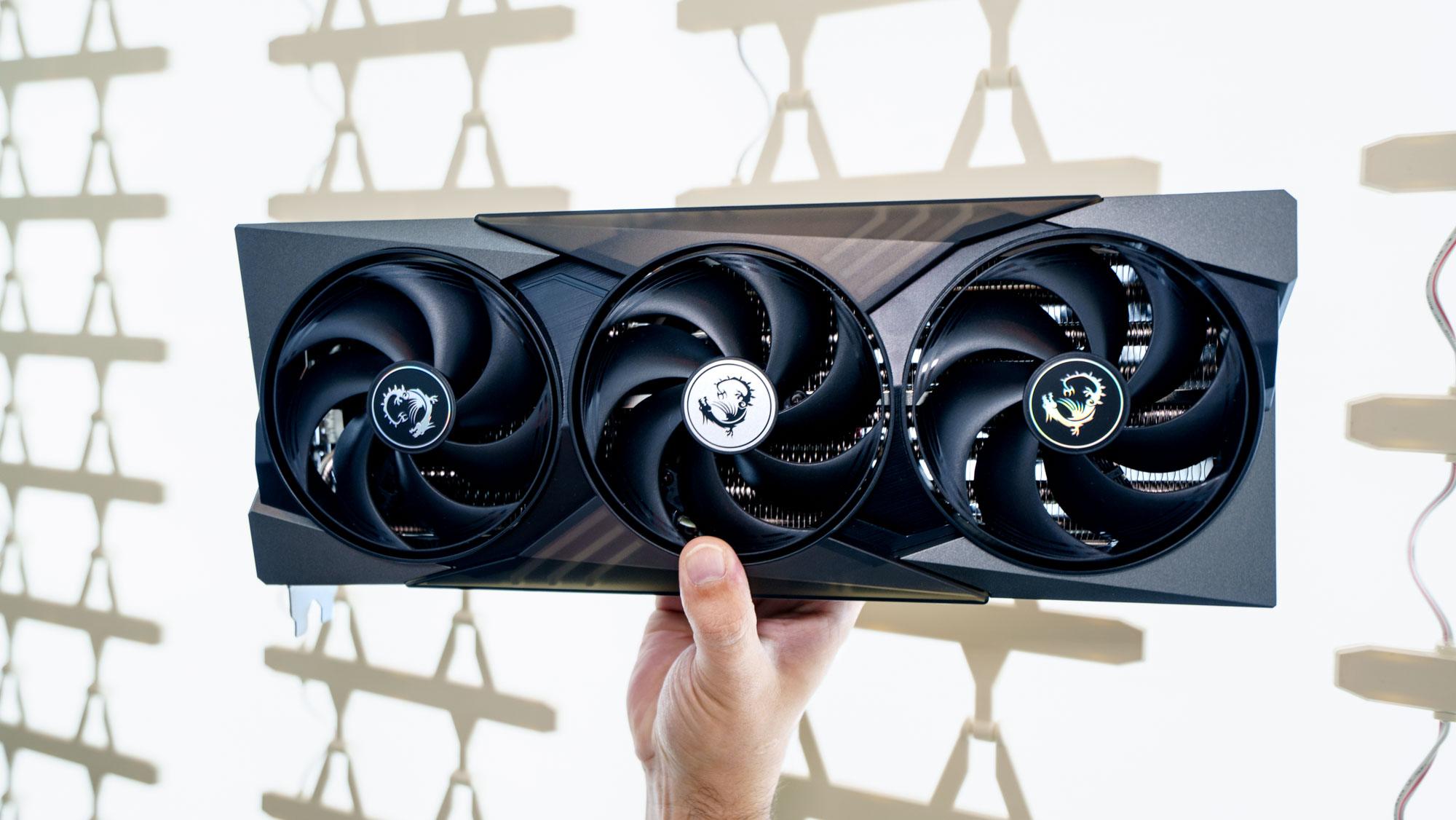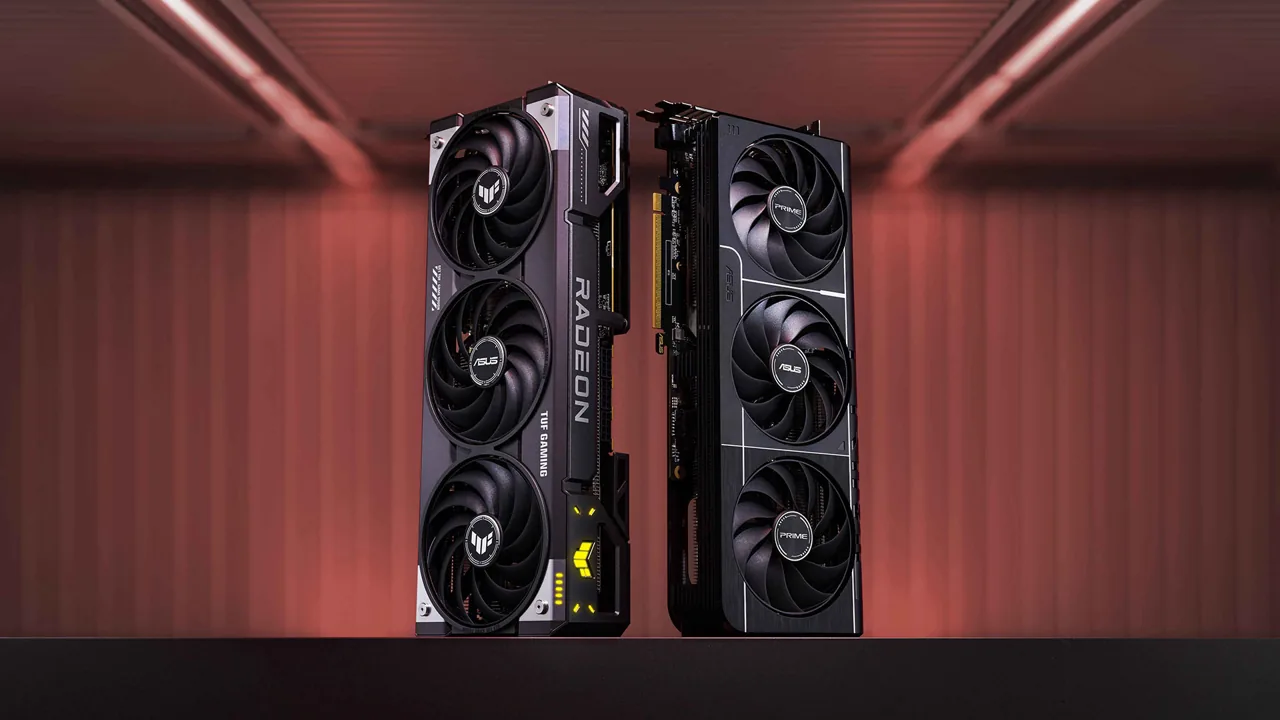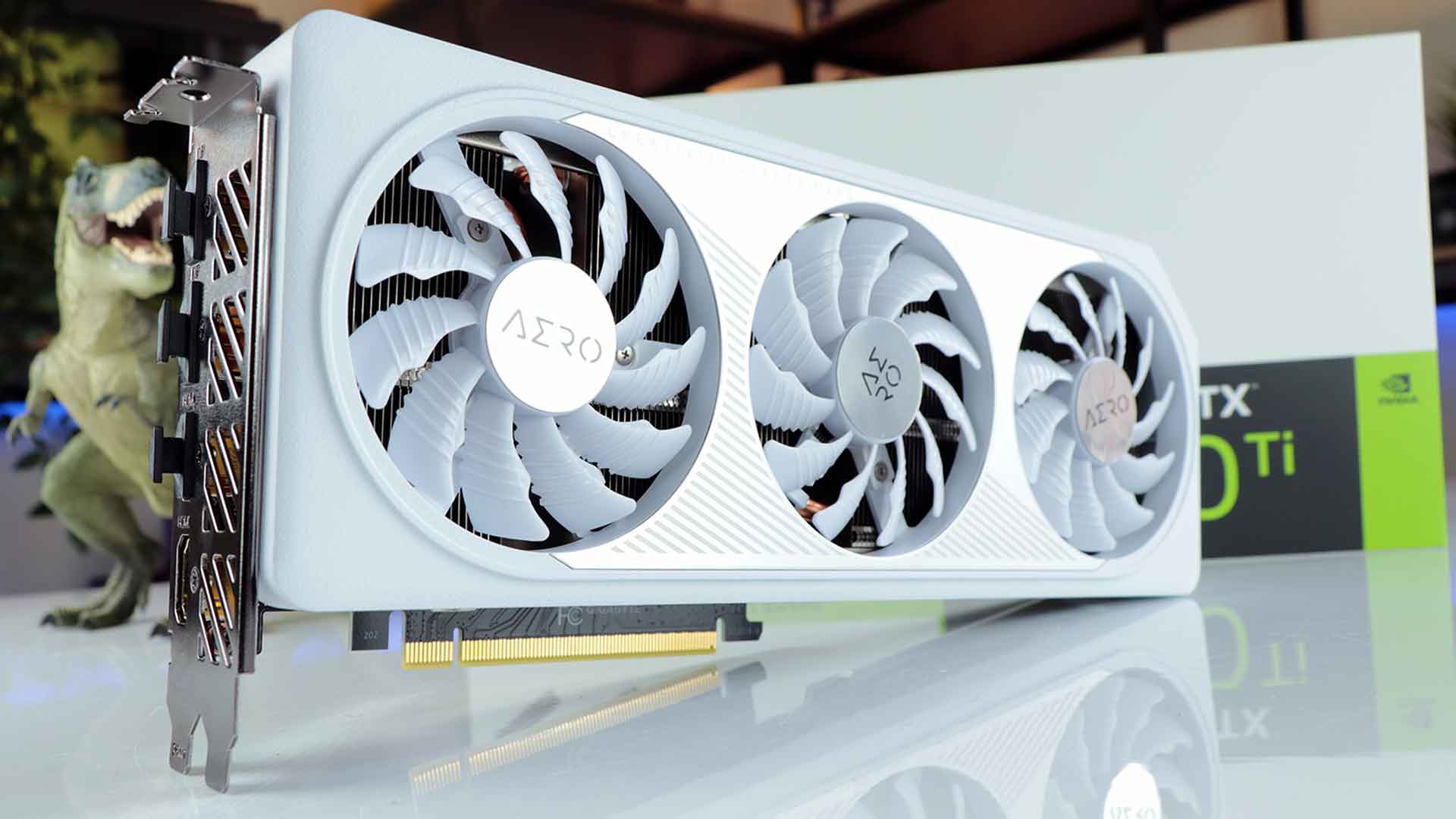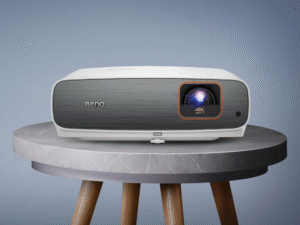GeForce RTX 5090: The Most Powerful Card Ever
When you purchase through links on our site, we may earn an affiliate commission. This does not cost you any additional money.
The NVIDIA GeForce RTX 5090 32G represents a breakthrough in graphics technology by leveraging the new Blackwell architecture, featuring 32 GB of GDDR7 memory on a 512-bit interface, PCI Express 5.0, and advanced AI-powered DLSS 4 with Multi Frame Generation—making it the pinnacle choice for gamers, creators, and AI workloads.
Pros
- Revolutionary Performance
- Cutting-edge AI Technologies
- Future-proof Connectivity
- Robust Thermal Design
Cons
- Premium Price
- High Power Consumption
- Driver Maturation
1. Design and Build Quality
Overall Aesthetic & Cooling System
The RTX 5090 32G features a bold, futuristic design that clearly marks its position as a flagship product. Its large, well-ventilated shroud houses an advanced cooling solution—often including multiple fans, a vapor chamber, or specialized heat pipes—to keep temperatures under control even during extended, heavy-duty use. The aggressive design with neon accents and a prominent NVIDIA logo makes it a statement piece in any high-performance rig.
Materials and Construction
Built primarily using robust metals and high-quality plastics, the GPU exhibits a premium feel and durable construction. The reinforced backplate not only adds rigidity but also aids in heat dissipation. While the design is visually striking, it’s engineered to maintain optimal airflow and efficient thermal output, crucial for a GPU operating at extreme performance levels.
2. GPU Architecture and Specifications
NVIDIA Blackwell Architecture and Core Advancements
At its core, the RTX 5090 32G is built on NVIDIA’s new Blackwell architecture, which introduces significant improvements in IPC (instructions per cycle) and energy efficiency. The integration of fifth-generation Tensor Cores and fourth-generation RT (ray tracing) Cores means that the GPU is optimized not only for brute-force performance but also for sophisticated AI rendering tasks and real-time ray tracing. This architectural leap enables features such as Multi Frame Generation—where AI predicts and generates up to four frames per cycle—resulting in incredibly smooth gameplay even at ultra-high resolutions.
Memory and Throughput
Equipped with 32 GB of GDDR7 memory on a 512-bit bus, the RTX 5090 provides immense bandwidth to handle complex textures and higher resolutions effortlessly. This makes it particularly advantageous for applications such as 4K/8K gaming, 3D rendering, and AI-based computational tasks. The memory subsystem is designed to reduce latency and handle massive data throughput, ensuring hyper-realistic graphics without bottlenecks.
Power Delivery and Efficiency
Despite its high performance, the RTX 5090’s power management system is engineered to optimize performance-per-watt through adaptive power scaling and refined voltage regulation. However, due to its sheer processing power, the GPU often requires a high-rated power supply (typically 1,000W or more) to run stably under full load.
3. Setup and Application
Unboxing and Initial Installation
Unboxing the RTX 5090 32G is an experience that underscores its premium nature. The card is securely packaged with comprehensive documentation, warranties, and even branded accessories like support brackets or extra cables. Installation is straightforward for users familiar with high-end GPUs—simply seat the card in your PCIe 5.0 slot, connect the necessary power cables, and update your BIOS if required for optimal compatibility.
Driver Installation and Software Ecosystem
The RTX 5090 leverages NVIDIA’s latest driver suite, which focuses on maximizing performance with the Blackwell architecture. Installing the Game Ready or Studio Driver via the NVIDIA GeForce Experience ensures that you benefit from the latest optimizations for both gaming and creative applications. It also includes support for DLSS 4, NVIDIA Reflex, and NVIDIA Broadcast—an ecosystem that enhances gaming responsiveness and streamlines content creation workflows.
Integration in Gaming and Creative Setups
In gaming setups, the RTX 5090 32G excels at driving ultra-high resolution displays, smooth frame rates, and full ray tracing in AAA titles. In creative environments, its massive VRAM and computational power make it ideal for real-time 3D rendering, video editing, and AI-driven applications. Whether you’re building a cutting-edge gaming PC or a workstation for high-end creative work, this GPU in combination with a well-balanced system ensures future-proof performance.
4. Performance and Smart Features
Gaming Benchmarks
Early reviews indicate that the RTX 5090 32G significantly outperforms previous flagship cards, delivering blowout frame rates at 4K resolution with all graphical settings maxed and full ray tracing enabled. Its low latency and smooth motion delivery, thanks to features like DLSS 4 with Multi Frame Generation and NVIDIA Reflex, provide a competitive edge in fast-paced gaming scenarios. Gamers report that even the most graphically demanding titles run seamlessly, transforming the gaming experience into one of unparalleled fluidity and realism.
AI-Powered Enhancements and Ray Tracing
The inclusion of fifth-generation Tensor Cores enables groundbreaking AI functionalities—most notably DLSS 4—which leverages Multi Frame Generation to boost FPS without sacrificing image quality. In parallel, advanced RT Cores deliver realistic ray tracing effects in real time, enhancing reflections, shadows, and global illumination, thereby creating an immersive visual experience that stands out from previous generations.
Thermal and Acoustic Performance Under Load
Under heavy load, the RTX 5090 32G’s cooling system is essential. Extensive testing shows that the advanced cooling design effectively manages temperatures even during intense gaming sessions or prolonged rendering tasks. While the card does consume significant power, the noise output remains competitively low thanks to adaptive fan control algorithms that balance cooling efficiency with acoustic performance.
5. Competitor Comparison
| Feature | NVIDIA GeForce RTX 5090 32G | NVIDIA GeForce RTX 4090 24G | AMD Radeon RX 7900 XTX |
|---|---|---|---|
| GPU Architecture | Blackwell | Ada Lovelace | RDNA 3 |
| Memory | 32GB GDDR7 (512-bit) | 24GB GDDR6X (384-bit) | 24GB GDDR6 (384-bit) |
| Performance Boost | DLSS 4 with Multi Frame Generation | DLSS 3 | FSR 2.2 |
| Peak Performance | Highest among current gen (theoretical) | Exceptionally high | Extremely fast in rasterization |
| Power Consumption | High (typically requires 1,000W PSU+) | High | Moderate to High |
| Price Range | Ultra-Premium (around $2,000 MSRP) | Premium (around $1,600 MSRP) | Competitive Premium (often lower MSRP) |
6. Final Thoughts on the NVIDIA GeForce RTX 5090 32G
In conclusion, the NVIDIA GeForce RTX 5090 32G is nothing short of a technological powerhouse. It pushes the envelope of what a gaming and creative GPU can achieve, offering unmatched performance, superb AI enhancements, and next-generation ray tracing—all driven by the innovative Blackwell architecture and supported by 32GB of super-fast GDDR7 memory. Although its premium price tag and high power draw may not make it an everyday choice for all, for those seeking the best in graphical performance and future-proofing, the RTX 5090 32G is an investment that promises to redefine digital experiences for years to come.

Looking for More GPU Options?
If you’re exploring high-end graphics cards, budget-friendly alternatives, or workstation GPUs, I’ve reviewed some of the best options available. Whether you need a compact RTX 5080, a high-memory Radeon GPU, or a workstation-class graphics card, check out my other reviews to find the perfect match! ➡️ View Now

About Andrew Collins
If you're looking for advice on PC components, you're in the right place. I've spent the last 4+ years diving deep into graphics cards, CPUs, keyboards, and everything in between. My passion started in high school when I built my first gaming system, and it quickly turned into a full-time pursuit of testing and reviewing hardware. I've contributed to forums, helped build dozens of systems, and now focus on writing honest, in-depth reviews to help readers make smart, confident buying decisions.














Post Comment